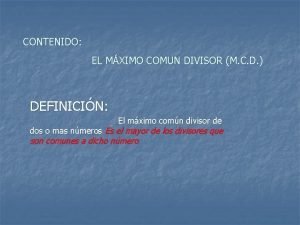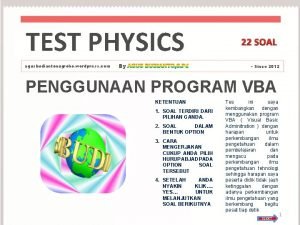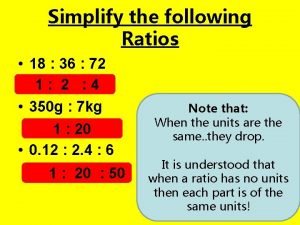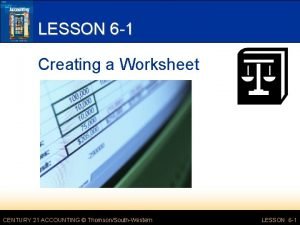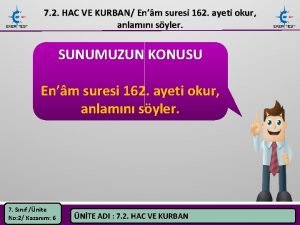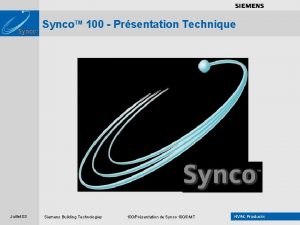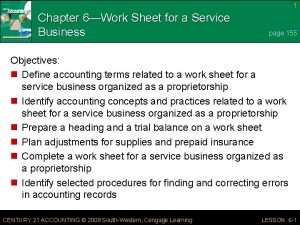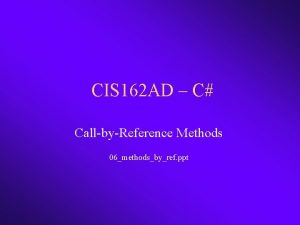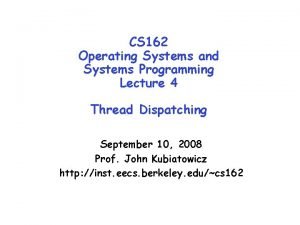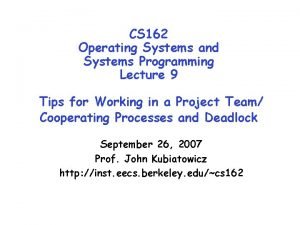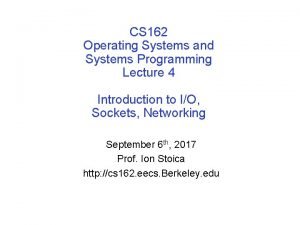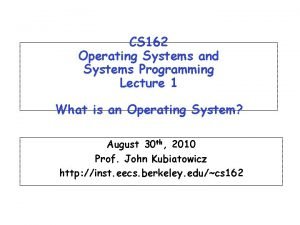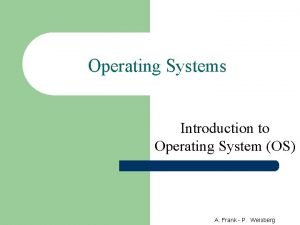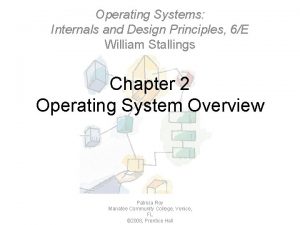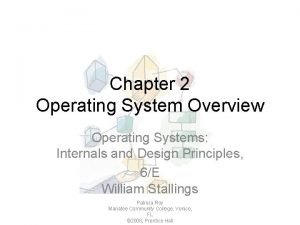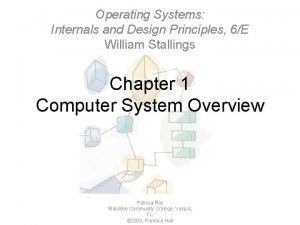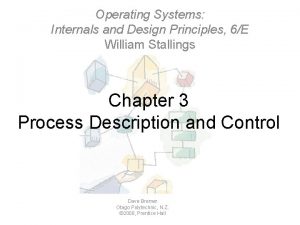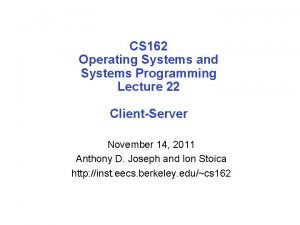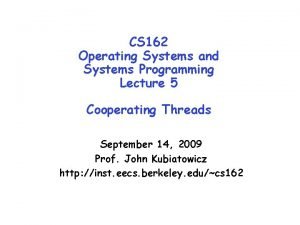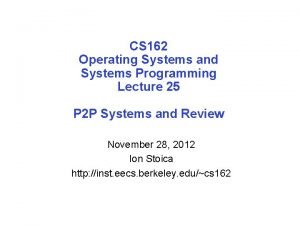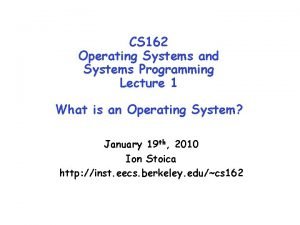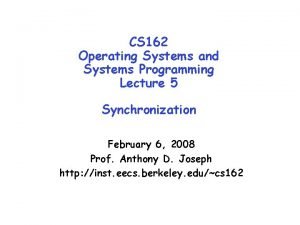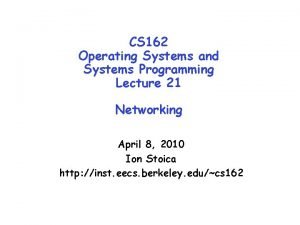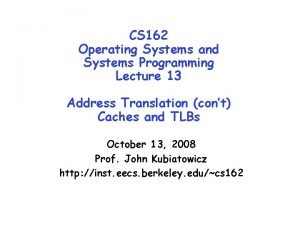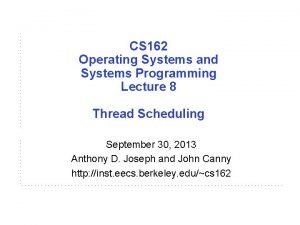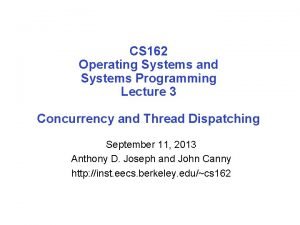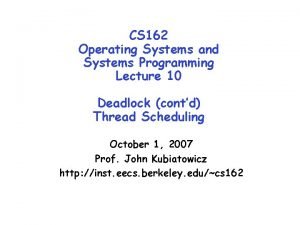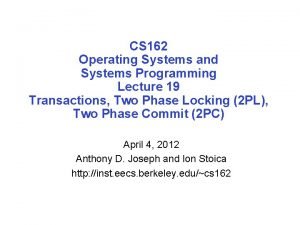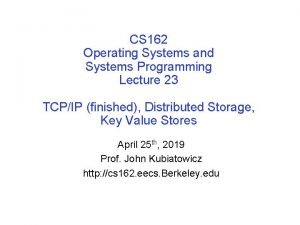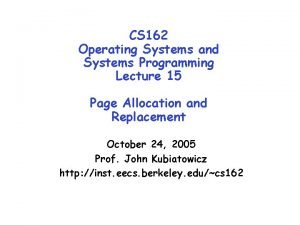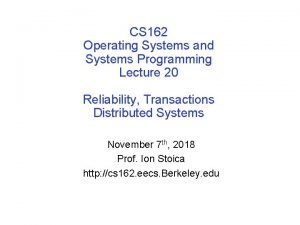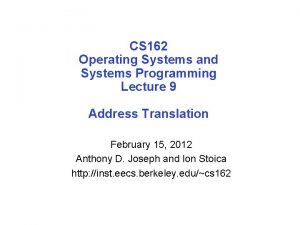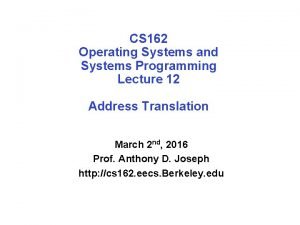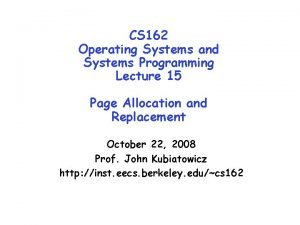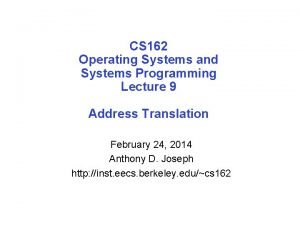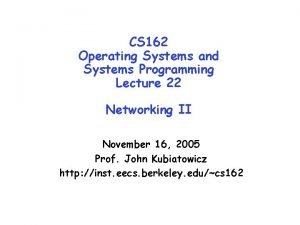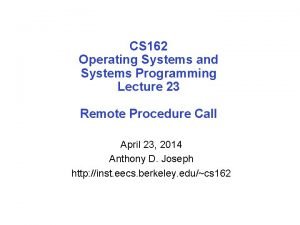CS 162 Operating Systems and Systems Programming Lecture







































- Slides: 39

CS 162 Operating Systems and Systems Programming Lecture 13 File Systems, Naming, Directories, and Caching March 5, 2012 Anthony D. Joseph and Ion Stoica http: //inst. eecs. berkeley. edu/~cs 162

Review: Magnetic Disk Characteristic • Cylinder: all the tracks under the head at a given point on all surface Head • Read/write data is a three-stage process: Track Sector Cylinder Platter – Seek time: position the head/arm over the proper track (into proper cylinder) – Rotational latency: wait for the desired sector to rotate under the read/write head – Transfer time: transfer a block of bits (sector) under the read-write head • Disk Latency = Queuing Time + Controller time + Seek Time + Rotation Time + Xfer Time Media Time (Seek+Rot+Xfer) Result Hardware Controller Request Software Queue (Device Driver) • Highest Bandwidth: – transfer large group of blocks sequentially from one track 3/5/2012 Anthony D. Joseph and Ion Stoica CS 162 ©UCB Spring 2012 13. 2

Goals for Today • Finish SSD discussion • Important System Properties • File Systems – Structure, Naming, Directories, Caching Note: Some slides and/or pictures in the following are adapted from slides © 2005 Silberschatz, Galvin, and Gagne Many slides generated from my lecture notes by Kubiatowicz. 3/5/2012 Anthony D. Joseph and Ion Stoica CS 162 ©UCB Spring 2012 13. 3

Review: Solid State Disks (SSDs) • NAND Flash – Sector addressable, but stores 4 -64 “sectors” per memory page – No moving parts (no rotate/seek motors) – Very low power and lightweight • Reading data similar to memory read (25μs) – No seek or rotational latency – Transfer time: transfer a block of bits (sector) » Limited by controller and disk interface (SATA: 300600 MB/s) – Disk Latency = Queuing Time + Controller time + Xfer Time – Highest Bandwidth: Sequential OR Random reads 3/5/2012 Anthony D. Joseph and Ion Stoica CS 162 ©UCB Spring 2012 13. 4

Review: SSD Architecture – Writes • Writing data is complex! (~200μs – 1. 7 ms ) – No seek or rotational latency, Xfer time: transfer a sector • But, can only write empty pages (erase takes ~1. 5 ms!) – Controller maintains pool of empty pages by coalescing used sectors (read, erase, write), also reserve some % of capacity • Typical steady state behavior when SSD is almost full – One erase every 64 or 128 writes (depending on page size) • Write and erase cycles require “high” voltage – Damages memory cells, limits SSD lifespan – Controller uses ECC, performs wear leveling – OS may provide TRIM information about “deleted” sectors • Result is very workload dependent performance – Disk Latency = Queuing Time + Controller time (Find Free Block) + Xfer Time – Highest BW: Seq. OR Random writes (limited by empty pages) Rule of» thumb: more expensive than reads, Sequentialwrites easier to 10 x implement since can write all data to same pg Anthony D. Joseph and Ion Stoica CS 162 ©UCB Spring 2012 3/5/2012 and erases 10 x more expensive than writes 13. 5

Drive Health: SMART • Self-Monitoring, Analysis and Reporting Technology – Drive reports on its own health 3/5/2012 Anthony D. Joseph and Ion Stoica CS 162 ©UCB Spring 2012 13. 6

Storage Performance & Price Bandwidth (sequential R/W) Cost/GB Size HHD 50 -100 MB/s $0. 05 -0. 1/GB 2 -4 TB SSD 1 200 -500 MB/s (SATA) 6 GB/s (PCI) $1. 5 -5/GB 200 GB-1 TB DRAM 10 -16 GB/s $5 -10/GB 64 GB-256 GB 1 http: //www. fastestssd. com/featured/ssd-rankings-the-fastest-solid-state-drives/ BW: SSD up to x 10 than HDD, DRAM > x 10 than SSD Price: HDD x 30 less than SSD, SSD x 4 less than DRAM 7 3/5/2012 Anthony D. Joseph and Ion Stoica CS 162 ©UCB Spring 2012 13. 7

Is 2012 the Tipping Point for SSDs? 3/5/2012 Anthony D. Joseph and Ion Stoica CS 162 ©UCB Spring 2012 13. 8

SSD Summary • Pros (vs. magnetic disk drives): – Low latency, high throughput (eliminate seek/rotational delay) – No moving parts: » Very light weight, low power, silent, very shock insensitive – Read at memory speeds (limited by controller and I/O bus) • Cons – Small storage (0. 1 -0. 5 x disk), very expensive (30 x disk) » Hybrid alternative: combine small SSD with large HDD – Asymmetric block write performance: read pg/erase/write pg » Controller GC algorithms have major effect on performance » Sequential write performance may be worse than HDD – Limited drive lifetime (NOR is higher, more expensive) » 50 -100 K writes/page for SLC, 1 -10 K writes/page for MLC 3/5/2012 Anthony D. Joseph and Ion Stoica CS 162 ©UCB Spring 2012 13. 9

Important “ilities” • Availability: the probability that the system can accept and process requests – Often measured in “nines” of probability. So, a 99. 9% probability is considered “ 3 -nines of availability” – Key idea here is independence of failures • Durability: the ability of a system to recover data despite faults – This idea is fault tolerance applied to data • Durability doesn’t imply Availability – Information on pyramids was very durable, but could not be accessed until discovery of Rosetta Stone • Reliability: the ability of a system or component to perform its required functions under stated conditions for a specified period of time (IEEE definition) – Usually stronger than simply availability: means that the system is not only “up”, but also working correctly – Includes availability, security, fault tolerance/durability – Must make sure data survives system crashes, disk crashes, other problems 3/5/2012 Anthony D. Joseph and Ion Stoica CS 162 ©UCB Spring 2012 13. 10

Building a File System • File System: Layer of OS that transforms block interface of disks (or other block devices) into Files, Directories, etc. • File System Components – Disk Management: collecting disk blocks into files – Naming: Interface to find files by name, not by blocks – Protection: Layers to keep data secure – Reliability/Durability: Keeping of files durable despite crashes, media failures, attacks, etc. • User vs. System View of a File – User’s view: » Durable Data Structures – System’s view (system call interface): » Collection of Bytes (UNIX) » Doesn’t matter to system what kind of data structures you want to store on disk! – System’s view (inside OS): » Collection of blocks (a block is a logical transfer unit, while a sector is the physical transfer unit) » Block size sector size; in UNIX, block size is 4 KB 3/5/2012 Anthony D. Joseph and Ion Stoica CS 162 ©UCB Spring 2012 13. 11

Translating from User to System View File System • What happens if user says: give me bytes 2— 12? – Fetch block corresponding to those bytes – Return just the correct portion of the block • What about: write bytes 2— 12? – Fetch block – Modify portion – Write out Block • Everything inside File System is in whole size blocks – For example, getc(), putc() buffers something like 4096 bytes, even if interface is one byte at a time • From now on, file is a collection of blocks 3/5/2012 Anthony D. Joseph and Ion Stoica CS 162 ©UCB Spring 2012 13. 12

Disk Management Policies • Basic entities on a disk: – File: user-visible group of blocks arranged sequentially in logical space – Directory: user-visible index mapping names to files • Access disk as linear array of sectors. – Logical Block Addressing (LBA): Every sector has integer address from zero up to max number of sectors. – Controller translates from address physical position » First case: OS/BIOS must deal with bad sectors » Second case: hardware shields OS from structure of disk • Need way to track free disk blocks – Link free blocks together too slow today – Use bitmap to represent free space on disk • Need way to structure files: File Header – Track which blocks belong at which offsets within the logical file structure • Optimize placement of files’ disk blocks to match access and usage patterns 3/5/2012 Anthony D. Joseph and Ion Stoica CS 162 ©UCB Spring 2012 13. 13

Designing the File System: Access Patterns • How do users access files? – Need to know type of access patterns user is likely to throw at system • Sequential Access: bytes read in order (“give me the next X bytes, then give me next, etc. ”) – Almost all file access are of this flavor • Random Access: read/write element out of middle of array (“give me bytes i—j”) – Less frequent, but still important. For example, virtual memory backing file: page of memory stored in file – Want this to be fast – don’t want to have to read all bytes to get to the middle of the file • Content-based Access: (“find me 100 bytes starting with JOSEPH”) – Example: employee records – once you find the bytes, increase my salary by a factor of 2 – Many systems don’t provide this; instead, build DBs on top of disk access to index content (requires efficient random access) – Example: Anthony Mac D. OSX Spotlight search (do we need directories? ) Joseph and Ion Stoica CS 162 ©UCB Spring 2012 3/5/2012 13. 14

Designing the File System: Usage Patterns • Most files are small (for example, . login, . c, . java files) – A few files are big – executables, . jar, core files, etc. ; the. jar is as big as all of your. class files combined – However, most files are small –. class’s, . o’s, . c’s, etc. • Large files use up most of the disk space and bandwidth to/from disk – May seem contradictory, but a few enormous files are equivalent to an immense # of small files • Although we will use these observations, beware usage patterns: – Good idea to look at usage patterns: beat competitors by optimizing for frequent patterns – Except: changes in performance or cost can alter usage patterns. Maybe UNIX has lots of small files because big files are really inefficient? • File System Goals: – Maximize sequential performance – Easy random access to file – Easy management of file (growth, truncation, etc) 3/5/2012 Anthony D. Joseph and Ion Stoica CS 162 ©UCB Spring 2012 13. 15

Linked Allocation: File-Allocation Table (FAT) • MSDOS links pages together to create a file – Links not in pages, but in the File Allocation Table (FAT) » FAT contains an entry for each block on the disk » FAT Entries corresponding to blocks of file linked together – Access properties: 3/5/2012 » Sequential access expensive unless FAT cached in memory » Random access expensive always, but really expensive if FAT not cached in memory Anthony D. Joseph and Ion Stoica CS 162 ©UCB Spring 2012 13. 16

Multilevel Indexed Files (UNIX 4. 1) • Multilevel Indexed Files: (from UNIX 4. 1 BSD) – Key idea: efficient for small files, but still allow big files • File hdr contains 13 pointers – Fixed size table, pointers not all equivalent – This header is called an “inode” in UNIX • File Header format: – First 10 pointers are to data blocks – Ptr 11 points to “indirect block” containing 256 block ptrs – Pointer 12 points to “doubly indirect block” containing 256 indirect block ptrs for total of 64 K blocks – Pointer 13 points to a triply indirect block (16 M blocks) 3/5/2012 Anthony D. Joseph and Ion Stoica CS 162 ©UCB Spring 2012 13. 17

Multilevel Indexed Files (UNIX 4. 1): Discussion • Basic technique places an upper limit on file size that is approximately 16 Gbytes – Designers thought this was bigger than anything anyone would need. Much bigger than a disk at the time… – Fallacy: today, EOS producing 2 TB of data per day • Pointers get filled in dynamically: need to allocate indirect block only when file grows > 10 blocks – On small files, no indirection needed 3/5/2012 Anthony D. Joseph and Ion Stoica CS 162 ©UCB Spring 2012 13. 18

Example of Multilevel Indexed Files • Sample file in multilevel indexed format: – How many accesses for block #23? (assume file header accessed on open)? » Two: One for indirect block, one for data – How about block #5? » One: One for data – Block #340? » Three: double indirect block, and data • UNIX 4. 1 Pros and cons – Pros: Simple (more or less) Files can easily expand (up to a point) Small files particularly cheap and easy – Cons: Lots of seeks Very large files must read many indirect blocks (four I/O’s per block!) 3/5/2012 Anthony D. Joseph and Ion Stoica CS 162 ©UCB Spring 2012 13. 19

Administrivia • Midterm Wednesday 3/7 at 5 -6: 30 PM in 10 Evans • Closed-book, 1 double-sided page of handwritten notes • Covers lectures/readings #1 -12 (Wed 3/1) and project one • Midterm review session today 7 -9 PM in 141 Mc. Cone 3/5/2012 Anthony D. Joseph and Ion Stoica CS 162 ©UCB Spring 2012 13. 20

5 min Break 3/5/2012 Anthony D. Joseph and Ion Stoica CS 162 ©UCB Spring 2012 13. 21

UNIX BSD 4. 2 • Same as BSD 4. 1 (same file header and triply indirect blocks), except incorporated ideas from Cray-1 DEMOS: – Uses bitmap allocation in place of freelist – Attempt to allocate files contiguously – 10% reserved disk space (mentioned next slide) – Skip-sector positioning (mentioned in two slides) • Problem: When create a file, don’t know how big it will become (in UNIX, most writes are by appending) – How much contiguous space do you allocate for a file? – In BSD 4. 2, just find some range of free blocks » Put each new file at the front of different range » To expand a file, you first try successive blocks in bitmap, then choose new range of blocks – Also in BSD 4. 2: store files from same directory near each other • Fast File System (FFS) – Allocation and placement policies for BSD 4. 2 3/5/2012 Anthony D. Joseph and Ion Stoica CS 162 ©UCB Spring 2012 13. 22

How to Deal with Full Disks? • In many systems, disks are always full – EECS department growth: 300 GB to 1 TB in a year » That’s 2 GB/day! (Now at 65+50 TB!) – How to fix? Announce that disk space is getting low, so please delete files? » Don’t really work: people try to store their data faster – Sidebar: Perhaps we are getting out of this mode with new disks… However, let’s assume disks are full for now • Solution: – Don’t let disks get completely full: reserve portion » Free count = # blocks free in bitmap » Scheme: Don’t allocate data if count < reserve – How much reserve do you need? » In practice, 10% seems like enough – Tradeoff: pay for more disk, get contiguous allocation » Since seeks so expensive for performance, this is a very good tradeoff 3/5/2012 Anthony D. Joseph and Ion Stoica CS 162 ©UCB Spring 2012 13. 23

Attack of the Rotational Delay • Problem 2: Missing blocks due to rotational delay – Issue: Read one block, do processing, and read next block. In meantime, disk has continued turning: missed next block! Need 1 revolution/block! Skip Sector Track Buffer (Holds complete track) – Solution 1: Skip sector positioning (“interleaving”) » Place the blocks from one file on every other block of a track: give time for processing to overlap rotation – Solution 2: Read ahead: read next block right after first, even if application hasn’t asked for it yet. » This can be done either by OS (read ahead) » By disk itself (track buffers). Many disk controllers have internal RAM that allows them to read a complete track • Important Aside: Modern disks+controllers do many complex things “under the covers” – Track buffers, elevator algorithms, bad block filtering 3/5/2012 Anthony D. Joseph and Ion Stoica CS 162 ©UCB Spring 2012 13. 24

How do we actually access files? • All information about a file contained in its file header – UNIX calls this an “inode” » Inodes are global resources identified by index (“inumber”) – Once you load the header structure, all the other blocks of the file are locatable • Question: how does the user ask for a particular file? – One option: user specifies an inode by a number (index). » Imagine: open(“ 14553344”) – Better option: specify by textual name » Have to map name inumber – Another option: Icon » This is how Apple made its money. Graphical user interfaces. Point to a file and click. • Naming: The process by which a system translates from uservisible names to system resources – In the case of files, need to translate from strings (textual names) or icons to inumbers/inodes – For global file systems, data may be spread over globe need to translate from strings or icons to some combination of physical server location and inumber Anthony D. Joseph and Ion Stoica CS 162 ©UCB Spring 2012 3/5/2012 13. 25

Directories • Directory: a relation used for naming – Just a table of (file name, inumber) pairs • How are directories constructed? – Directories often stored in files » Reuse of existing mechanism » Directory named by inode/inumber like other files – Needs to be quickly searchable » Options: Simple list or Hashtable » Can be cached into memory in easier form to search • How are directories modified? – Originally, direct read/write of special file – System calls for manipulation: mkdir, rmdir – Ties to file creation/destruction » On creating a file by name, new inode grabbed and associated with new file in particular directory 3/5/2012 Anthony D. Joseph and Ion Stoica CS 162 ©UCB Spring 2012 13. 26

Directory Organization • Directories organized into a hierarchical structure – Seems standard, but in early 70’s it wasn’t – Permits much easier organization of data structures • Entries in directory can be either files or directories • Files named by ordered set (e. g. , /programs/p/list) 3/5/2012 Anthony D. Joseph and Ion Stoica CS 162 ©UCB Spring 2012 13. 27

Directory Structure • Not really a hierarchy! – Many systems allow directory structure to be organized as an acyclic graph or even a (potentially) cyclic graph – Hard Links: different names for the same file » Multiple directory entries point at the same file – Soft Links: “shortcut” pointers to other files » Implemented by storing the logical name of actual file • Name Resolution: The process of converting a logical name into a physical resource (like a file) – Traverse succession of directories until reach target file – Global file system: May be spread across the network 3/5/2012 Anthony D. Joseph and Ion Stoica CS 162 ©UCB Spring 2012 13. 28

Directory Structure (Con’t) • How many disk accesses to resolve “/my/book/count”? – Read in file header for root (fixed spot on disk) – Read in first data block for root » Table of file name/index pairs. Search linearly – ok since directories typically very small – Read in file header for “my” – Read in first data block for “my”; search for “book” – Read in file header for “book” – Read in first data block for “book”; search for “count” – Read in file header for “count” • Current working directory: Per-address-space pointer to a directory (inode) used for resolving file names – Allows user to specify relative filename instead of absolute path (say CWD=“/my/book” can resolve “count”) 3/5/2012 Anthony D. Joseph and Ion Stoica CS 162 ©UCB Spring 2012 13. 29

Where are inodes stored? • In early UNIX and DOS/Windows’ FAT file system, headers stored in special array in outermost cylinders – Header not stored anywhere near the data blocks. To read a small file, seek to get header, seek back to data. – Fixed size, set when disk is formatted. At formatting time, a fixed number of inodes were created (They were each given a unique number, called an “inumber”) 3/5/2012 Anthony D. Joseph and Ion Stoica CS 162 ©UCB Spring 2012 13. 30

Where are inodes stored? • Later versions of UNIX moved the header information to be closer to the data blocks – Often, inode for file stored in same “cylinder group” as parent directory of the file (makes an ls of that directory run fast). – Pros: » UNIX BSD 4. 2 puts a portion of the file header array on each cylinder. For small directories, can fit all data, file headers, etc. in same cylinder no seeks! » File headers much smaller than whole block (a few hundred bytes), so multiple headers fetched from disk at same time » Reliability: whatever happens to the disk, you can find many of the files (even if directories disconnected) – Part of the Fast File System (FFS) » General optimization to avoid seeks 3/5/2012 Anthony D. Joseph and Ion Stoica CS 162 ©UCB Spring 2012 13. 31

In-Memory File System Structures • Open system call: – Resolves file name, finds file control block (inode) – Makes entries in per-process and system-wide tables – Returns index (called “file handle”) in open-file table • Read/write system calls: – Use file handle to locate inode – Perform appropriate reads or writes 3/5/2012 Anthony D. Joseph and Ion Stoica CS 162 ©UCB Spring 2012 13. 32

File System Caching • Key Idea: Exploit locality by caching data in memory – Name translations: Mapping from paths inodes – Disk blocks: Mapping from block address disk content • Buffer Cache: Memory used to cache kernel resources, including disk blocks and name translations – Can contain “dirty” blocks (blocks yet on disk) • Replacement policy? Least Recently Used (LRU) – Can afford overhead of timestamps for each disk block – Advantages: » Works very well for name translation » Works well in general as long as memory is big enough to accommodate a host’s working set of files. – Disadvantages: » Fails when some application scans through file system, thereby flushing the cache with data used only once » Example: find. –exec grep foo {} ; • Other Replacement Policies? – Some systems allow applications to request other policies – Example, ‘Use Once’: 3/5/2012 » File system can discard blocks as soon as they are used Anthony D. Joseph and Ion Stoica CS 162 ©UCB Spring 2012 13. 33

File System Caching (cont’d) • Cache Size: How much memory should the OS allocate to the buffer cache vs virtual memory? – Too much memory to the file system cache won’t be able to run many applications at once – Too little memory to file system cache many applications may run slowly (disk caching not effective) – Solution: adjust boundary dynamically so that the disk access rates for paging and file access are balanced • Read Ahead Prefetching: fetch sequential blocks early – Key Idea: exploit fact that most common file access is sequential by prefetching subsequent disk blocks ahead of current read request (if they are not already in memory) – Elevator algorithm can efficiently interleave groups of prefetches from concurrent applications – How much to prefetch? » Too many imposes delays on requests by other applications » Too few causes many seeks (and rotational delays) among concurrent file requests 3/5/2012 Anthony D. Joseph and Ion Stoica CS 162 ©UCB Spring 2012 13. 34

File System Caching (cont’d) • Delayed Writes: Writes to files not immediately sent out to disk – Instead, write() copies data from user space buffer to kernel buffer (in cache) » Enabled by presence of buffer cache: can leave written file blocks in cache for a while » If some other application tries to read data before written to disk, file system will read from cache – Flushed to disk periodically (e. g. in UNIX, every 30 sec) – Advantages: » Disk scheduler can efficiently order lots of requests » Disk allocation algorithm can be run with correct size value for a file » Some files need never get written to disk! (e. . g temporary scratch files written /tmp often don’t exist for 30 sec) – Disadvantages » What if system crashes before file has been written out? » Worse yet, what if system crashes before a directory file has been written out? (lose pointer to inode!) 3/5/2012 Anthony D. Joseph and Ion Stoica CS 162 ©UCB Spring 2012 13. 35

How to make file system durable? • Disk blocks contain Reed-Solomon error correcting codes (ECC) to deal with small defects in disk drive – Can allow recovery of data from small media defects • Make sure writes survive in short term – Either abandon delayed writes or – use special, battery-backed RAM (called non-volatile RAM or NVRAM) for dirty blocks in buffer cache. • Make sure that data survives in long term – Need to replicate! More than one copy of data! – Important element: independence of failure » Could put copies on one disk, but if disk head fails… » Could put copies on different disks, but if server fails… » Could put copies on different servers, but if building is struck by lightning…. » Could put copies on servers in different continents… • RAID: Redundant Arrays of Inexpensive Disks – Data stored on multiple disks (redundancy) – Either in software or hardware 3/5/2012 » In hardware case, done by disk controller; file system may not even know that there is more than one disk in use Anthony D. Joseph and Ion Stoica CS 162 ©UCB Spring 2012 13. 36

Log Structured and Journaled File Systems • Better reliability through use of log – All changes are treated as transactions – A transaction is committed once it is written to the log » Data forced to disk for reliability » Process can be accelerated with NVRAM – Although File system may not be updated immediately, data preserved in the log • Difference between “Log Structured” and “Journaled” – In a Log Structured file system, data stays in log form – In a Journaled file system, Log used for recovery • For Journaled system: – Log used to asynchronously update filesystem » Log entries removed after used – After crash: » Remaining transactions in the log performed (“Redo”) » Modifications done in way that can survive crashes • Examples of Journaled File Systems: – Ext 3 (Linux), XFS (Unix), HDFS (Mac), NTFS (Windows), etc. Anthony D. Joseph and Ion Stoica CS 162 ©UCB Spring 2012 3/5/2012 13. 37

Summary (1/2) • Important system properties – Availability: how often is the resource available? – Durability: how well is data preserved against faults? – Reliability: how often is resource performing correctly? • File System: – Transforms blocks into Files and Directories – Optimize for access and usage patterns – Maximize sequential access, allow efficient random access • File (and directory) defined by header – Called “inode” with index called “inumber” • Multilevel Indexed Scheme – Inode contains file info, direct pointers to blocks, – indirect blocks, doubly indirect, etc. . 3/5/2012 Anthony D. Joseph and Ion Stoica CS 162 ©UCB Spring 2012 13. 38

Summary (2/2) • 4. 2 BSD Multilevel index files – Inode contains pointers to actual blocks, indirect blocks, double indirect blocks, etc. – Optimizations for sequential access: start new files in open ranges of free blocks, rotational Optimization • Naming: act of translating from user-visible names to actual system resources – Directories used for naming for local file systems • Buffer cache used to increase file system performance – Read Ahead Prefetching and Delayed Writes 3/5/2012 Anthony D. Joseph and Ion Stoica CS 162 ©UCB Spring 2012 13. 39
 Operating systems lecture notes
Operating systems lecture notes 01:640:244 lecture notes - lecture 15: plat, idah, farad
01:640:244 lecture notes - lecture 15: plat, idah, farad C programming lecture
C programming lecture Prime factorization of 108 using exponents
Prime factorization of 108 using exponents Speed velocity and acceleration quiz
Speed velocity and acceleration quiz Scomposizione in fattori primi di 162
Scomposizione in fattori primi di 162 Hcf of 30 and 60
Hcf of 30 and 60 M.c.d de 7 y 21
M.c.d de 7 y 21 Apsc 162
Apsc 162 Prime factorization of 24
Prime factorization of 24 Komulator
Komulator Simplify each of the following ratios
Simplify each of the following ratios 1. 6-1 work together, p. 162
1. 6-1 work together, p. 162 6-1 work together p. 162 answers
6-1 work together p. 162 answers Chapter 6 worksheet for a service business answers
Chapter 6 worksheet for a service business answers 7 sınıf en'âm suresi 162. ayet
7 sınıf en'âm suresi 162. ayet Rle 162
Rle 162 6-4 work together p. 170
6-4 work together p. 170 Hlinex, 0,1,2,3 hlinef (x),6,18,54,162 hline
Hlinex, 0,1,2,3 hlinef (x),6,18,54,162 hline 162 ad
162 ad Pb 162
Pb 162 Cs 162
Cs 162 C++ language
C++ language Cs 162
Cs 162 Cs 162
Cs 162 Abcdefghijklmnopqrstvwxyz
Abcdefghijklmnopqrstvwxyz Perbedaan linear programming dan integer programming
Perbedaan linear programming dan integer programming Greedy algorithm vs dynamic programming
Greedy algorithm vs dynamic programming Windows 10 system programming, part 1
Windows 10 system programming, part 1 Linear vs integer programming
Linear vs integer programming Definisi integer
Definisi integer Can we make operating systems reliable and secure
Can we make operating systems reliable and secure Operating system internals and design principles
Operating system internals and design principles Module 4 operating systems and file management
Module 4 operating systems and file management Operating systems: internals and design principles
Operating systems: internals and design principles Operating systems: internals and design principles
Operating systems: internals and design principles Operating systems: internals and design principles
Operating systems: internals and design principles Operating systems: internals and design principles
Operating systems: internals and design principles Operating systems internals and design principles
Operating systems internals and design principles Operating systems internals and design principles
Operating systems internals and design principles







